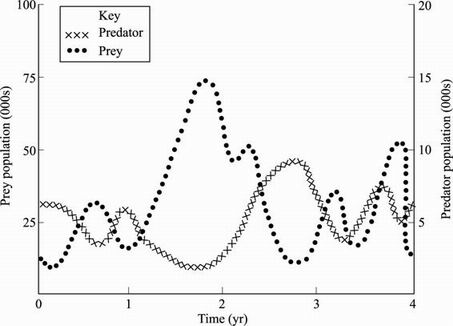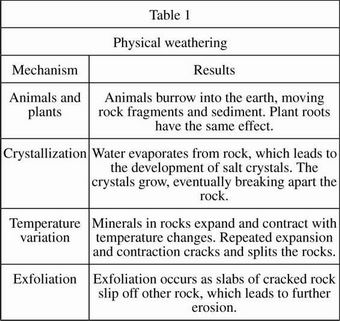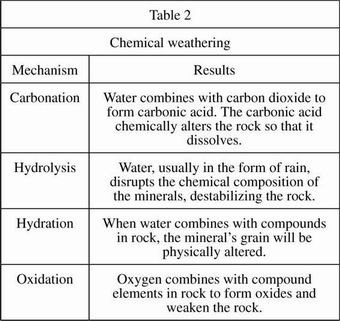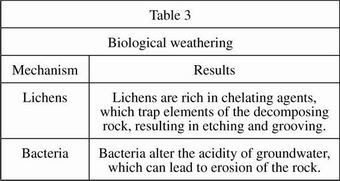
ACT Science Practice Test 62
Đề thi nằm trong bộ sưu tập: Tuyển Tập Bộ Đề Thi Đại Học Hoa Kỳ (ACT) - Có Đáp Án Chi Tiết
Số câu hỏi: 11 câuSố mã đề: 1 đềThời gian: 1 giờ
206,000 lượt xem 15,839 lượt làm bài
Xem trước nội dung:
PASSAGE III
Predation is an interaction between individuals of 2 species in which one is harmed (the prey), and the other is helped (the predator). Predation can occur among plants and animals as well as between plants and animals. Some biologists contend that herbivores, or plant eaters, are predators. Table 1 indicates some characteristics and examples of certain predators.

Predation is very important in maintaining a natural balance in any given ecosystem. For example, without predators, prey populations tend to grow exponentially. Without prey, predator populations tend to decline exponentially. Predators consume individual members of the prey population, thereby controlling the overall numbers in the ecosystem. The number of prey consumed depends on the number of prey present as well as the number of predators present. The rate of change in the number of prey is a function of the birth of new prey minus the death of other prey, due either to predation or other causes. The death rate is assumed to depend on the number of prey available and the number of predators. The rate of change in the number of predators is a function of the births of new predators-which depends on the number of prey-minus the death of some predators.
Over long periods of time, predator and prey tend to balance each other out. This is called the predator-prey cycle. Prey numbers will increase when predator numbers decrease. When the number of prey reaches a certain point, predators will start to increase until they eat enough prey to cause a decline in prey numbers. When this happens, the number of predators will begin to decrease because they can't find enough prey to eat, and the cycle will begin again. Figure 1 represents an example of a predator-prey cycle.

Figure 1
Based on information in the passage and in Table 1, an herbivore is:
a predator only.
both a parasite and a predator.
prey only.
both a predator and prey.
According to information in the passage, the number of prey consumed in an ecosystem is dependent on:
the natural balance of the ecosystem.
the total number of predators that die because of predation.
the type of parasites available in the ecosystem.
the number of predators present and the number of prey present.
Based on Figure 1, during the first year, predator numbers:
were inversely related to prey numbers.
were directly related to prey numbers.
were equal to prey numbers.
were always greater than prey numbers.
Studies have shown that a certain species of deer will only eat a specific type of plant found in the deer's natural habitat, and nothing else. Is this finding supported by the information in the passage?
No, because a deer is an herbivore, which means it eats all plants.
No, because a deer is a carnivore and does not eat plants.
Yes, because a deer is an herbivore, and herbivores can be selective eaters.
Yes, because a deer is a prey animal, so it must use caution when eating.
Based on Figure 1, during which year were the greatest number of prey animals available?
1
2
3
4
PASSAGE IV
The term weathering refers to the processes that cause surface rock to disintegrate into smaller particles or dissolve in water. These processes are often slow, taking place over thousands of years. The amount of time that rock has been exposed to the elements (primarily wind and water) influences the degree to which the rock will weather.
Weathering processes are divided into three categories: physical, chemical, and biological.
Table 1 shows some of the factors that contribute to physical weathering.

Chemical weathering occurs when minerals in rock are chemically altered. Table 2 shows some of the factors that contribute to chemical weathering.

Plants and bacteria contribute to biological weathering. The ultimate product of biological agents on rock is soil. Table 3 shows some factors of biological weathering.

Based on the data in the passage, plants contribute to which of the following types of weathering?
Physical only
Both physical and biological
Biological only
Physical, chemical, and biological
According to Table 1, extreme temperature changes can lead to:
increased acidity in groundwater.
the creation of carbonic acid.
the development of salt crystals.
cracked and split rock.
A layer of fine sediment mixed with some organic material is found surrounding a rock formation. The most likely cause for this is:
chemical weathering.
exfoliation.
biological weathering.
oxidation.
Based on Table 2, the factor that contributes most to the alteration of minerals and rock is:
the acidity level.
the presence of water.
the availability of oxygen.
the mineral composition of the rock.
According to Table 3, a chelating agent:
releases elements into the soil.
alters the acidity of groundwater.
dissolves rapidly in water.
traps elements of the decomposing rock.
Rainwater is slightly acidic, and it can dissolve many minerals over time. This process is most consistent with the mechanism of:
exfoliation.
oxidation.
hydrolysis.
chelation.
